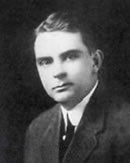User:Jay516/sandbox
 | This is a user sandbox of Jay516. You can use it for testing or practicing edits. This is not the sandbox where you should draft your assigned article for a dashboard.wikiedu.org course. To find the right sandbox for your assignment, visit your Dashboard course page and follow the Sandbox Draft link for your assigned article in the My Articles section. |
Neurocritical care or neurointensive care is a branch of medicine with the goal to treat life-threatening diseases of the nervous system and identify, prevent/treat secondary brain injury.
 An intensive care unit in a hospital | |
| System | Nervous system |
|---|---|
| Significant diseases | stroke, seizure, epilepsy, aneurysms, Traumatic brain injury, spinal cord injury, status epilepticus, Cerebral edema, encephalitis, meningitis, brain tumor, respiratory failure secondary to neuromuscular disease. |
| Significant tests | Computed axial tomography, MRI scan, Lumbar puncture |
| Specialist | neurointensivists, neurosurgeons |
History[edit]

There are many examples of attempts to manage neurological injuries through history including trepanned skulls found from ancient Egypt and descriptions of neurological treatments in ancient Greek text[1]. Modern, neurointensive care begin with the advent of intensive care centers to treat the poliomyelitis epidemic during the mid-twentieth century[2]. These early respiratory care units utilized negative and positive pressure units call the “Iron Lung” to aid patients in respiration and greatly decreased the mortality rate of Polo[3]. Dr. Bjørn Aage Ibsen, a physician in Denmark, is thought to have "birthed the intensive care unit”, when he used tracheostomy and positive pressure manual ventilation to keep polio patients alive due an influx of patients and limited resources (only one iron Lung)[4].

The first neurological intensive care unit was created by Dr. Dandy Walker at John Hopkins in 1929[5]. Dr. Walker was neurosurgeon that realized that some neurosurgical patient could benefit from specialized postoperative neurosurgical monitoring and treatment. After this unit showed a benefit to post-operative patients, neurologic patients were added. Dr. Safar is credited with creating the first intensive care unit in the united states at Baltimore in the 1950’s[6]. In the 1970’s the benefit of specialize care in respiratory and cardiac ICUs led to the Society of Critical Care medicine being formed. This body created standards for how patients with extensive and difficult medical problems would be treated. Over time the requirements of intracranial pressure monitoring, frequent detailed neurological examinations and hypothermia to preserve neurologic function in cardiovasecular resuscitated patients led to specialized neurologic intensive care units.
Modern Neurocritical care field developed in the late twentieth century and was formalized in 2002 when the Neurocritical care society was founded. In 2005, Neurocritical care was recognized as a neurological subspecialty[7].
Scope[edit]
The doctors who practice this type of medicine are called neurointensivists, and can have medical training in many fields, including neurology, anesthesiology, emergency medicine, or neurosurgery. Common diseases treated in neurointensive care units include strokes, ruptured aneurysms, brain and spinal cord injury from trauma, seizures (especially those that last for a long period of time- status epilepticus, and/or involve trauma to the patient, i.e., due to a stroke or a fall), swelling of the brain (intracranial edema), infections of the brain (encephalitis) and the brain's or spine's meninges (meningitis), brain tumors (especially malignant cases; with neurological oncology), and weakness of the muscles required to breathe (such as the diaphragm). Besides dealing with critical illness of the nervous system, neurointensivists also treat the medical complications that may occur in their patients, including those of the heart, lung, kidneys, or any other body system, including treatment of infections.
Neuointensive care centers[edit]
Neurological Intensive care units are specialized units in select tertiary care centers that specialized in the care of critical ill neurological and post neurological surgical patients. The goal of NICUs are to provide early and aggressive medical interventions including managing pain, airways, ventilation, anticoagulation, elevated ICP, cardiovascular stability and secondary neurological injury. Admission criteria includes: Impaired consciousness, impaired ability to protect airway, progressive respiratory weakness, need for mechanical ventilation, seizure, Radiologic evidence of elevated ICP, monitoring of neurologic function in patients that are critically ill. Neuro-ICU have been seeing increasing use at tertiary care centers. One of the main reasons why Neuro-ICUs have seen increased use is the use of therapeutic hypothermia which has been shown to improve long-term neurological outcomes following cardiac arrest. [8]
Neurointesive care team[edit]
Most neurocritical care units are a collaborative effort between neurointensivists, neurosurgeons, neurologists, radiologists, pharmacists, physician extenders (such as nurse practitioners or physician assistants), critical care nurses, respiratory therapists, rehabilitation therapists, and social workers who all work together in order to provide coordinated care for the critically ill neurologic patient.
Neurointensive care Treatments[edit]
Hypothermia: One third to half of people with coronary artery disease will have an episode where their heart stops. Of the patients who have their heart stoped seven to thirty percent leave the hospital with good neurological outcome (conscious, normal brain function, alert, capable of normal life). Lowering patients body temperter between 32 -34 degrees within six hours of arriving at the hospital doubles the patients with no significant brain damage compared to no cooling and increases survival of patients[9].
Basic life support monitoring: Electrocardiography, pulse oximetry, blood pressure, assessment of comatose patients. [10]
Neurological monitoring : Serial neurologic examination, assessment of comatose patients (Glasgow Coma Scale plus pupil or four score), ICP (subarachnoid hemorrhages, TBI, Hydrocephalus, Stroke, CNS infection, Hepatic failure), multimodality monitoring to monitor disease and prevent secondary injury in states that are insensitive to neurological exam or conditions confounded by sedation, neuromuscular blockade and coma.
ICP management: Ventricular catheter to monitor Brain oxygen and concentrations of glucose and PH. With treatment options of Hypertonic serum, barbiturates, hypothermia and decompressive hemi-craniotomy
TPA: Monitor patient who receive e TPA Monitor for 24 hours for brain bleeds
Seziure management: Seizure medication, continueous EEG monitoring [11]
Common neurointensive care illnesses[edit]
TBI: Sedation, ICP monitoring and management, Decompressive Craniectomy, Hyperosmolar therapy and maintain hemodynamic stability[12]
Stroke: Airway management, Maintenance of blood pressure and cerebral perfusion, intravenous fluid management, Temperature control, prophylaxis against seizures, nutrition, ICP management and treatment of medical complications [13]
Subarachnoid hemorrhage: find cause of hemorrhage, treat aneurysm or arteriovenous malformation if necessary, monitor for clinical deterioration, manage systemic complications and maintain cerebral perfusion pressure and prevent vasospasm and bridge patient to angiographic clipping [14]
Status Epilepticus: termination of seizures, prevention of seizure recurrence, treatment of cause of seizure, management of complications, monitoring of hemodynamic stability and continuous EEG [15]
Meningitis: empirical treatment with antibiotics, maintain hemodynamic stability, [16]
Encephalitis: Airway protection, monitoring of ICP, treatment of seizures if necessary, and sedation if patient is agitated and virial testing hemodynamic stability [17]
Acute parainfectious inflammatory encephalopathy (Acute disseminated encephalomyelitis (ADEM) and Acute hemorrhagic leucoencephalitis (AHL)) : high dose corticosteroids, monitoring of hemodynamic stability [18]
Multiple sclerosis, Autonomic neuropathy, spinal cord lesion and neuromuscular disease causing respiratory failure: monitor respiration and respiratory assistance if necessary. hemodynamic stability [19]
See also
External links
References
- ^ Korbakis, Georgia; Bleck, Thomas (2014). "The Evolution of Neurocritical Care". Crit Care Clin. 30 (4). doi:10.1016/j.ccc.2014.06.001. PMID 25257734.
- ^ Wijdicks, EF (2017). "The history of neurocritical care". Handb Clin Neurol. 140: 3-14. doi:10.1016/B978-0-444-63600-3.00001-5. PMID 28187805.
- ^ Korbakis, Georgia; Bleck, Thomas (2014). "The Evolution of Neurocritical Care". Crit Care Clin. 30 (4). doi:10.1016/j.ccc.2014.06.001. PMID 25257734.
- ^ Wijdicks, Eelco (2017). "The history of neurocritical care". n Handbook of Clinical Neurology. 140: 3-14. doi:10.1016/B978-0-444-63600-3.00001-5. PMID 28187805.
- ^ Korbakis, Georgia; Bleck, Thomas (2014). "The Evolution of Neurocritical Care". Crit Care Clin. 30 (4). doi:10.1016/j.ccc.2014.06.001. PMID 25257734.
- ^ Korbakis, Georgia; Bleck, Thomas (2014). "The Evolution of Neurocritical Care". Crit Care Clin. 30 (4). doi:10.1016/j.ccc.2014.06.001. PMID 25257734.
- ^ Korbakis, Georgia; Bleck, Thomas (2014). "The Evolution of Neurocritical Care". Crit Care Clin. 30 (4). doi:10.1016/j.ccc.2014.06.001. PMID 25257734.
- ^ Zacharia, BE; Vaughan, KA; Bruce, SS; Grobelny, BT; Narula, R; Khandji, J; Carpenter, AM; Hickman, ZL; Ducruet, AF; Sander Connolly, E (2012). "Epidemiological trends in the neurological intensive care unit from 2000 to 2008". Journal of Clinical Neuroscience. 19 (12): 1669-72. doi:10.1016/j.jocn.2012.04.011. PMID 23062793.
- ^ Arrich, Jasmin; Holzer, Michael; Havel, Christof; Müllner, Marcus; Herkner, Harald (2016). "Hypothermia for neuroprotection in adults after cardiopulmonary resuscitation". Cochrane Database of Systematic Reviews. 2. doi:10.1002/14651858.CD004128.pub4. PMID 26878327.
- ^ Le Roux, P; Menon, D.K.; Cirerio, G; Etc (2014). "Consensus summary statement of the International Multidisciplinary Consensus Conference on Multimodality Monitoring in Neurocritical Care". Intensive Care Medicine. 40 (9): 1189 - 1209. doi:10.1007/s00134-014-3369-6. PMID 25138226.
- ^ Datar, Sudhir (2017). "New Developments in Refractory Status Epilepticus". Neurol Clin. 35: 751-760. doi:10.1016/j.ncl.2017.06.010. PMID 28962812.
- ^ Abou El Fadl, Mohamed; O'phelan, Kristine (2017). "Management of Traumatic Brain Injury: An Update". Neurol Clin. 35: 641-653. doi:10.1016/j.ncl.2017.06.003. PMID 28962805.
- ^ Howard, R., Kullmann, D., & Hirsch, N. (2003). Admission to neurological intensive care: who, when, and why? Journal of Neurology, Neurosurgery, and Psychiatry, 74(Suppl 3), iii2–iii9. http://doi.org/10.1136/jnnp.74.suppl_3.iii2
- ^ Howard, R., Kullmann, D., & Hirsch, N. (2003). Admission to neurological intensive care: who, when, and why? Journal of Neurology, Neurosurgery, and Psychiatry, 74(Suppl 3), iii2–iii9. http://doi.org/10.1136/jnnp.74.suppl_3.iii2
- ^ Howard, R., Kullmann, D., & Hirsch, N. (2003). Admission to neurological intensive care: who, when, and why? Journal of Neurology, Neurosurgery, and Psychiatry, 74(Suppl 3), iii2–iii9. http://doi.org/10.1136/jnnp.74.suppl_3.iii2
- ^ Howard, R., Kullmann, D., & Hirsch, N. (2003). Admission to neurological intensive care: who, when, and why? Journal of Neurology, Neurosurgery, and Psychiatry, 74(Suppl 3), iii2–iii9. http://doi.org/10.1136/jnnp.74.suppl_3.iii2
- ^ Howard, R., Kullmann, D., & Hirsch, N. (2003). Admission to neurological intensive care: who, when, and why? Journal of Neurology, Neurosurgery, and Psychiatry, 74(Suppl 3), iii2–iii9. http://doi.org/10.1136/jnnp.74.suppl_3.iii2
- ^ Howard, R., Kullmann, D., & Hirsch, N. (2003). Admission to neurological intensive care: who, when, and why? Journal of Neurology, Neurosurgery, and Psychiatry, 74(Suppl 3), iii2–iii9. http://doi.org/10.1136/jnnp.74.suppl_3.iii2
- ^ Howard, R., Kullmann, D., & Hirsch, N. (2003). Admission to neurological intensive care: who, when, and why? Journal of Neurology, Neurosurgery, and Psychiatry, 74(Suppl 3), iii2–iii9. http://doi.org/10.1136/jnnp.74.suppl_3.iii2
